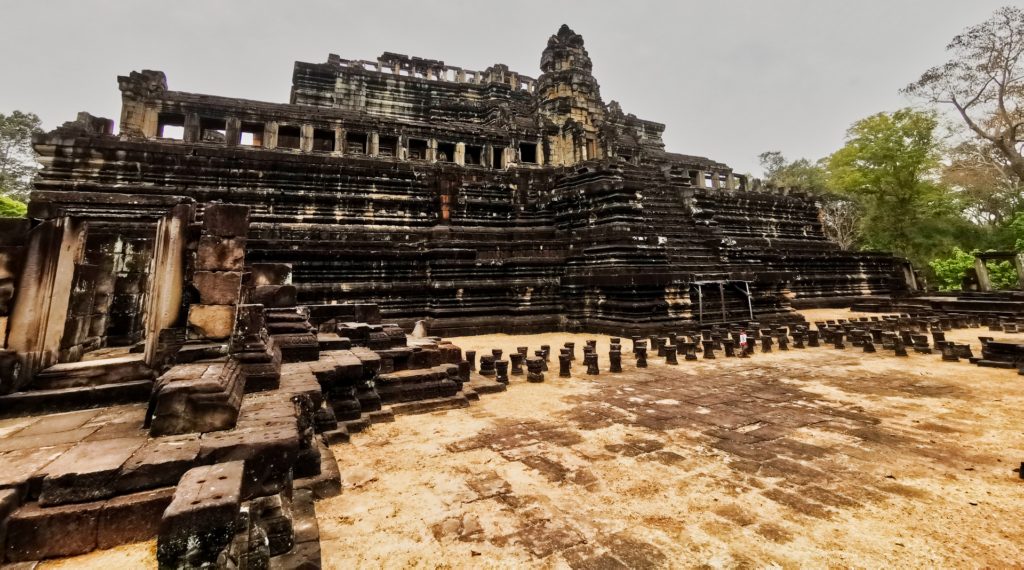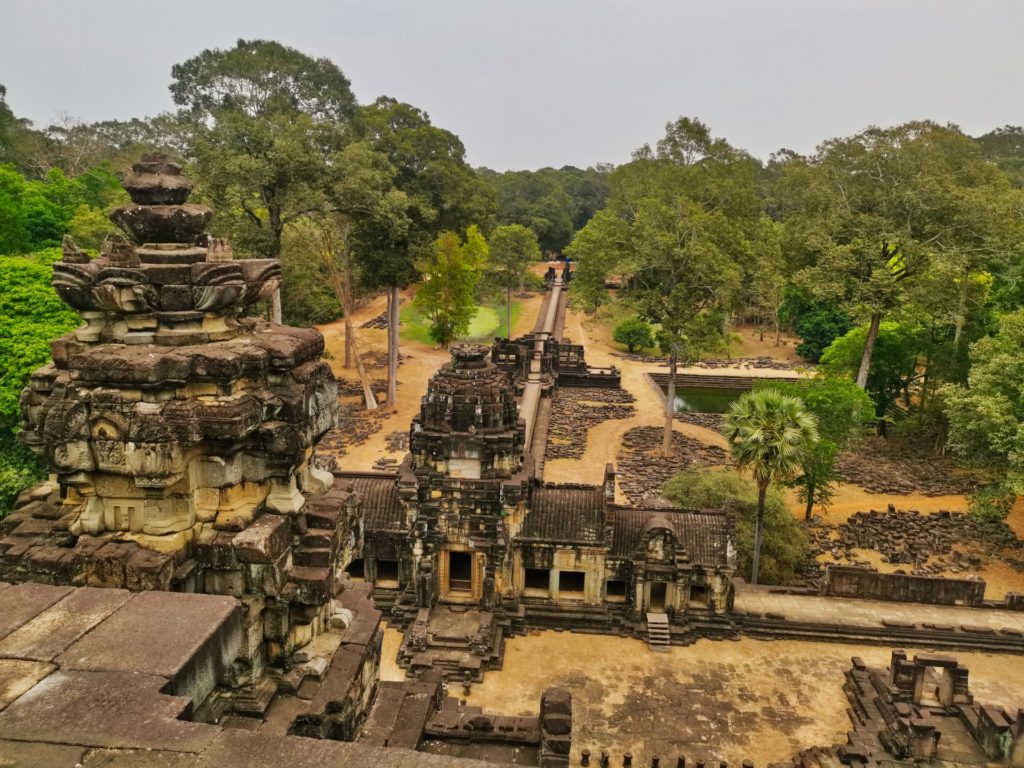Baphuon – a temple built on a hill
The Baphuon is one of the most popular temple complexes of Angkor Thom and counts as one of the few structures of the Khmer actually as an archaeological temple mountain. It was built in the 11th century under King Udayadityavarman II, who intended it to be the state temple of the Khmer Empire and was considered the focal point of the capital Yasodharapura (which also corresponded to the locality within the city). The site is located just a few kilometers from Siem Reap, which is also the starting point for many visitor tours.

View of Baphuon from the first plateau
In addition to the size of the structure and the rich detail of the architecture, it is the inscriptions and reliefs that make the Baphuon so important for archaeological research (and subsequently interesting for visitors). The complex was originally dedicated to the deity Shiva, but in the 15th century (after the ravages of time caused the temple hill to fall apart) the western side was reassembled, which to this day is said to represent the reclining Buddha and has since become a popular photo motif, especially among visitors.
King Udayadityavarman II tried to set a new standard for the splendor of state temples with the construction of the temple complex, which he succeeded in doing well with the erection of the Baphuon. Already in the 13th century, Chinese travelers recorded in writing how impressed they were by the building.

View from the Baphuon to the entrance
On the reliefs on the temple there are representations of Hindu mythology, which gave the researchers a deep insight into the beliefs of Hinduism of that time and the resulting cultural basis.
The temple complex was built almost entirely of sandstone, although laterite was also used in the masonry. The choice to rely on earth for the core of the mountain unfortunately doomed the structure, as this caused it to decay. The complex is surrounded by a rectangular enclosure, the entrance for visitors is located here in the east, where a magnificent main gate can still be found. A special feature is the 170-meter-long walkway that leads to the inner pavilion and the Temple Mount itself. On the top level of the Temple Mount there is a prasat (which in its high days must have been about 50 meters high). At the galleries there are then some impressive gate and corner towers, however, the second level may not be entered at the moment, as there is still repair work to be done.
The temple complex has been extensively restored since the 1990s and rebuilt in loving detail to a large extent, so that visitors can still expect a spectacular sight when visiting the temple mountain, which makes the Baphuon in any case a worthwhile destination.